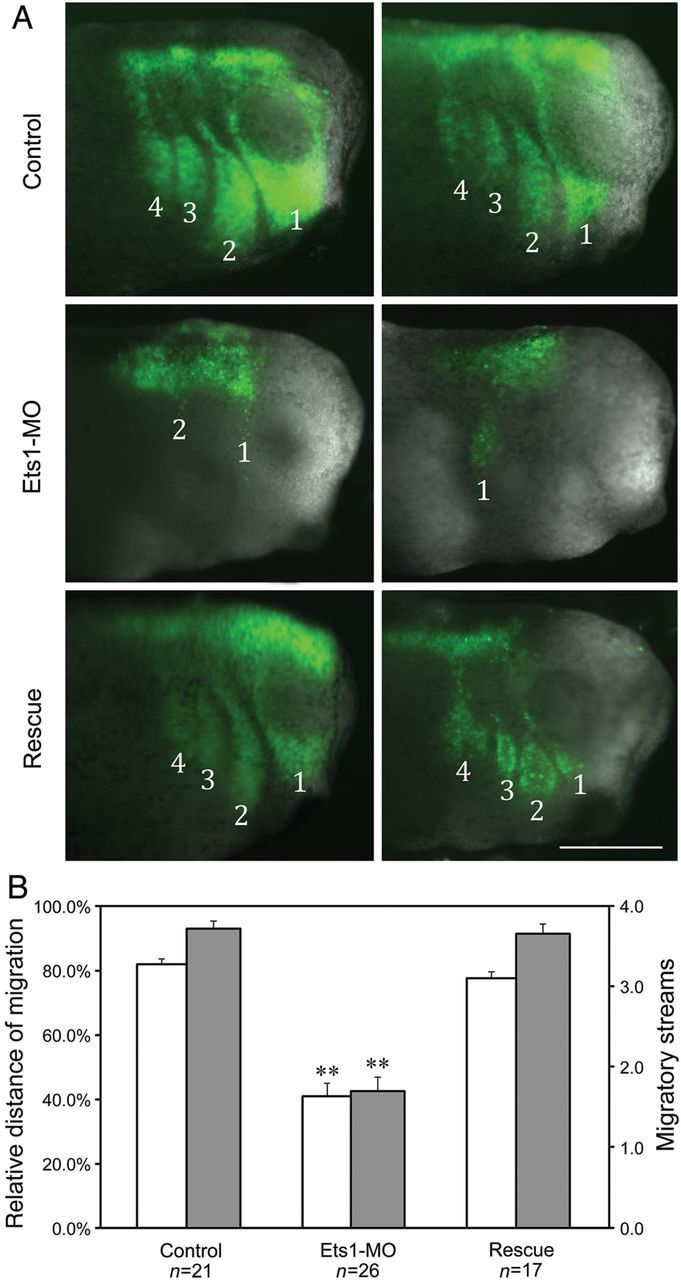Figure 3.

Ets1 is required cell-autonomously for NC migration. Cranial NC explants were dissected from injected embryos and grafted into stage-matched uninjected host embryos. (A) The migration of NC grafts in host embryos was visualized by coexpressed EGFP. While control NC grafts segregated into four migratory steams and migrated into the branchial arches, Ets1-MO expressing grafts failed to migrate very far. There were also fewer migratory streams. Coexpressing Ets1-MO plus Ets1a and Ets1b rescued the effect. Stage 30 embryo heads are shown with anterior to the right. Scale bar = 0.5 mm. (B) The farthest distances of NC migration along the D-V axis were measured in every embryo and the relative migration distance was calculated by comparing that to the entire D-V length of the embryo. In addition, the numbers of migratory streams were counted and summarized in the bar graph. Control grafts on average migrated 82 ± 2% along the D-V axis and segregated into 3.7 ± 0.1 streams. Ets1-MO decreased those into 40 ± 4% of distance and 1.7 ± 0.2 streams. Adding back Ets1a/b rescued the effect significantly, restoring the migration distance to 78 ± 2% of the axis and migratory streams to 3.6 ± 0.1. Asterisks indicates that Ets1-MO inhibited NC migration significantly when comparing to control or rescue conditions (with P < 0.01).
